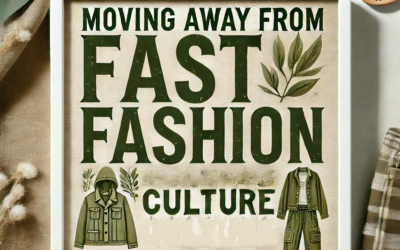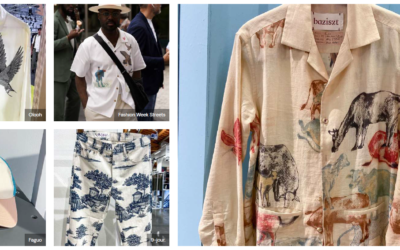Muslin is a word that has enchanted the world for the 17th and 18th century for its properties as well as craftsmanship. A pride of Bengal and a worthy opponent of royal clothes all over the world has a rich history. Let us explore today the breathtaking history and the extinction of the world’s finest cloth.
Origin of The Word “Muslin”
The origin of the word Muslin is unclear. Some say the word muslin comes from Mosul, an ancient trading center in Iraq. Again, some think that the word muslin is associated with Musalipattam, the one-time headquarters of a European trading company in southern India.
This word isn’t originated from Persian, Bangla or Sanskrit. Probably the clothes that the Europeans imported from Mosul and the clothes that were brought from other countries of the East through Mosul were called muslin. Then the finest cloth made in Dhaka was called muslin or should say Dhakai Muslin.
Some should say that It’s unclear who gave the name again some would say that it was definitely the Europeans who gave this name. Whoever gave the name, they may be didn’t think that one day this cloth will uphold a whole sub-continent or will be written with the history of pride and agony.
Royal “Muslin” History
When we talk about muslin, Mughal Empire’s name always popped out of history. While in the time of Mughal period the muslin clothing received royal patronage and it ensured another crucial quality certification from the people. Also, the announcement of Dhaka as the capital of Muslin made the trading of muslin to spread far from China to the Middle Eastern Country. The quality, the semitransparent look, the finest touch of craftsmanship attracted people from all over the world. Muslin was widely used to made gown or accessories in European countries.
The tradition of the textile industry in Bengal is quite ancient. At one time Bengal’s cotton cloth was exported to Rome and China. It is mentioned in Ptolemy’s Geography, Periplus of the Erythraean Sea, and in the descriptions of ancient Chinese travellers.
In 1851, Dhaka muslin became the dominant language in a huge exhibition in London and attracted a large number of visitors. British newspapers and magazines praised the excellence and delicacy of Dhaka muslin cloth.
Picture: Muslin as Royalty
During the 17th and 18th centuries, Mughal Bengal emerged as the foremost muslin exporter in the world, with Mughal Dhaka as the capital of the worldwide muslin trade.
Dhakai “Muslin”
The special environment of Dhaka, specially the bank of the river Brahmaputra was perfect to grow the “Phuti” Cotton. A cotton plant from which the cotton fiber was collected to make Dhakai Muslin. Quality of soil, level of moisture and other environmental factors also contributed to the growth of legendary cotton plant.
The threads that were produced from this cotton plant are both soft and strong. Craftsman weaved them by hand into the amazingly fine and beautiful muslin fabrics. Special skills were evolved over the ages and then passed down through the generations. These were used in the spinning and weaving of the amazing muslin fabric.
Dhakai Muslin.
As we are talking about that time when the total Indian subcontinent was under the rule of royalty, The maslin or “Malmal” was not only a type of cloth but it was produced with different count and different fineness. Some type of Muslins are:
- Malbus Khas– Used in Mughal royal family. 1 yard in length 10 yards in width. Weight lifting.
- Malmal Khas– The new muslin that was made for the kings after the Malbus Khas was discontinued in the 18th century.
- Sarkar-i-Ala– Nawab – Subedar used to use it. 1 yard in length 10 yards in width. Weight lifting 10.
- Ab-e-Rowan– was clear as clear water
- Jhuna– The women of the Mughal harem used to wear these clothes. It was also used by women of aristocratic families. The dancers used to dance while wearing clothes made from it.
- Shabnam– so fine that if it was dried on the grass in the morning, it could not be distinguished from dew.
- Badan Khas– used to enhance the beauty of the body of the wearer. Was particularly comfortable. Its weaving would not have been denser.
As mentioned before, muslin is a semi-transparent fabric, sometimes it was considered with fog for its dense look.
History of Agony
Muslin suffered a great loss when people were turning their attention to the machine-made cheap clothing. But not only one cause made the cloth to extinct from the world. So what were the agonies? Why did it extinct?
Cheap “industrial Cloth” vs Royal “Muslin”
During British colonial rule, the muslin industry was made down by various colonial policies, which supported imports of industrially manufactured textiles from Britain. These clothes were cheaper than the Muslin.
With the establishment of the East India Company’s monopoly over the trade of Bengal after the “Battle of Palashi, 1757”, the trade of other European companies and traders belonging to other nationals practically came to a stop.
Pay Tax!
A heavy duty of 75 percent was imposed on the export of cotton from Bengal which ultimately leads to the decline of muslin trade in Bengal because the traders suffered from loss.
Payment for Muslin with blood
Those families who used to made Muslin had to face the cruelty of the government because of the master craftsmanship. Their thumbs were cut off so that they couldn’t pass down the skill to other generation. But some says that the hands of the weavers were not British, but they cut off their own fingers so that the work of weaving would no longer have to be done.
Though the second one don’t have any historical mention but the first one was mentioned by William Bolts.
Thus the history was written and the muslin was extinct and the finest cloth that Bengal could produce was jamdani.
But after a lot of effort, the world again felt the softness of muslin with the revival of Muslin with the help of the Government and some people who wholeheartedly tried to revive the golden past, the glory, The Muslin.
Let’s hear that some other day! Till then stay safe and keep others safe around you!
By Team Bucolic Bohemian,
Umme Memory Mim
Textile Fashion and Design (2018-1-6-012)
Sabiha Moon Taha
Textile Fashion and Design (2019-1-6-006)
Md. Mahmud Hosen
Fabric Engineering (2020-1-2-006)
Reference:
- https://www.google.com/url?sa=i&url=https%3A%2F%2Fen.wikipedia.org%2Fwiki%2FMuslin&psig=AOvVaw3TcVw-GCwyrMOkvSKulydk&ust=1619869895794000&source=images&cd=vfe&ved=0CAIQjRxqFwoTCJivreXzpfACFQAAAAAdAAAAABAD
- https://www.google.com/url?sa=i&url=https%3A%2F%2Fwww.amazon.com%2FCotton-Muslin-Fabric-Optic-White%2Fdp%2FB079VQZMTT&psig=AOvVaw3TcVw-GCwyrMOkvSKulydk&ust=1619869895794000&source=images&cd=vfe&ved=0CAIQjRxqFwoTCJivreXzpfACFQAAAAAdAAAAABAp
You can also read another of our premium and all time trending article about Fashion in the 21st century here!
And if you want to read another one of our premium case studies on Fast Fashion Vs Slow Fashion, you can go here!
To know a bit about khadi, a traditional fabric of Bangladesh, you can go here!
You can also read our another article written on the history of pattern and motif!




0 Comments
Trackbacks/Pingbacks